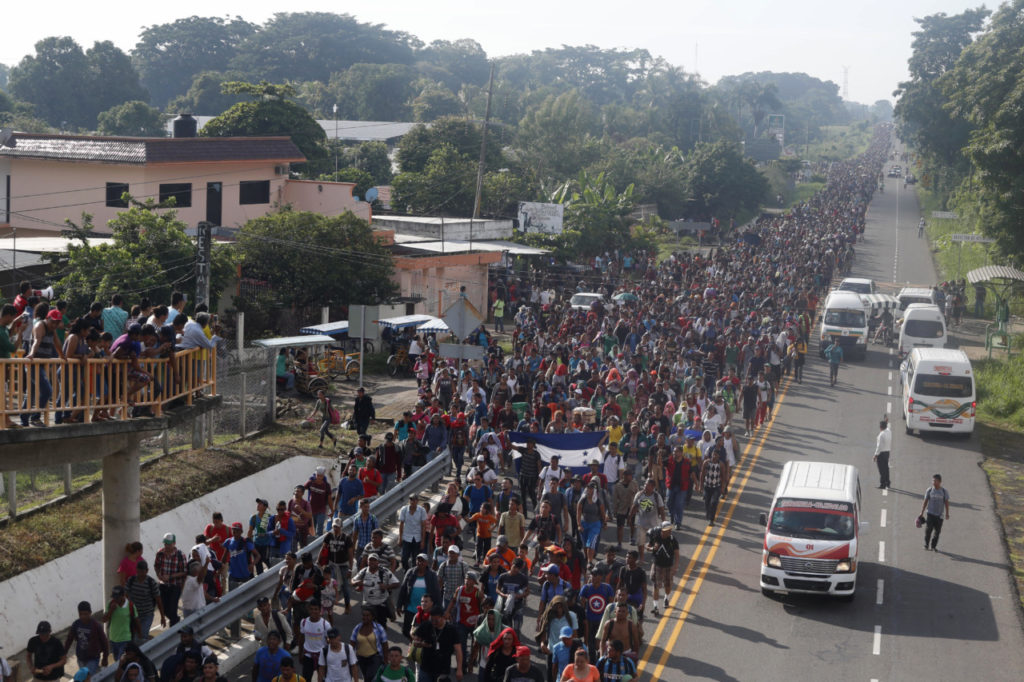
October 30, 2018, 9:02 AM EST
written by Net Advisor™
EXCERPT: The U.S. stock market has been selling off this October, showing concern of a possible power shift with the upcoming midterm elections. What has the market so concerned that could severely impact the current growth in the economy? We examine these questions here.
The U.S. stock market saw a big run up since the November 2016 election. The Dow (DJIA) stood at 18,332.74 one day before the Nov 8, 2016 Presidential Election. Since Trump’s win, the DJIA soared to a whopping 47.02 percent to 26,951.81.
The market has been pulling back hard this October, down about 9.3 percent from its all-time high. Historically, September and October have tended to be negative months anyway, and given the run up in the market, a natural correction of ten percent is not uncalled for.
But markets don’t rise or fall, ‘just because.’ Markets are data and news driven. So what is impacting the markets today?
Two Ways to Kill a Growing Economy
We see two key factors that are driving the markets and not necessarily in this order:
(1) Interest rates, and
(2) The midterm elections.
First we examine interest rates.
Interest Rates
As we see it, the FED has been unnecessarily raising the Fed Funds Rate (“FFR”) (the rate the FED charges banks for overnight loans). The FFR increases also impact the costs of banks doing business. As a result, banks pass on this higher costs to business and consumers in the form of higher lending rates.
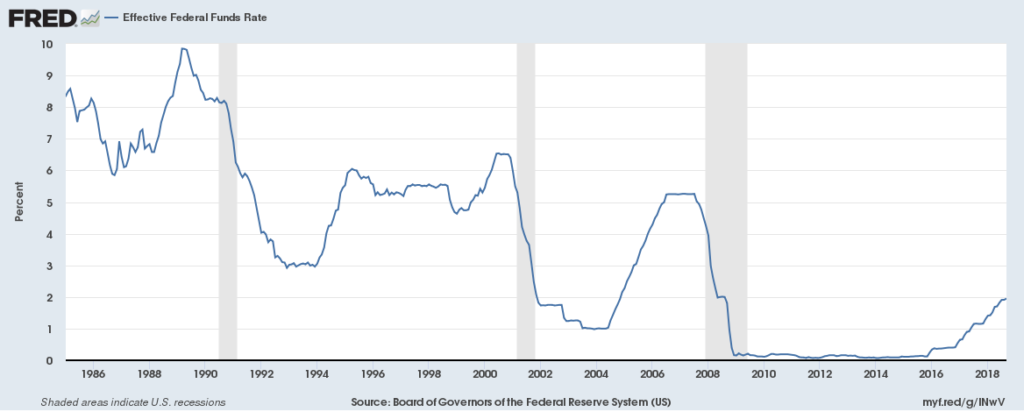
Note (FRED, FFR charts above and below): As the FED moves rates more aggressively, recessions tend to follow. Historically, the FED’s aggressive rate hikes that led to recessions tends to be accurate.
To save the FED from total embarrassment, their charting program only goes back to 1955. The below chart shows the change in FFR and when recessions occurred since 1955.
Notice the drop in rates during recessions. The FED had to compensate for their mistakes for toying with the economy where higher rates led to recessions.
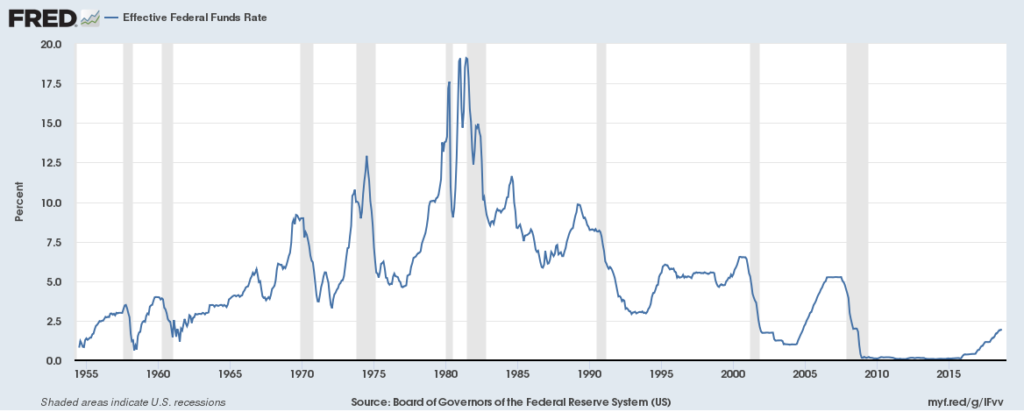
Again, note the grey bars showing recessions tend to occur after the FED thought they could manage the economy better than the free market and spike rates to prevent the economy from “overheating” – meaning growing too much.
The FED is primary concerned about inflation. As the economy grows, there is higher demand for workers. To attract workers who may be already employed, companies have to pay more to keep them. Other companies have to offer more to woo people over to fill jobs for their company. This is classic supply and demand: Fewer available workers require more money to retain or attract them to work.
This growing economic demand does increase costs for the business, and thus too for the consumer in terms of slightly higher prices; but the business and consumer are both making more money.
In a recession, people buy less, thus the demand for workers decrease. As more people are unemployed, companies don’t need to maintain high wages or salaries. With a large supply of available workforce, wages stay low.
Importing (or migrating) workers from outside the U.S. also keeps wages and salaries down, as the market has to take in a larger pool of workers. This is why both (D) and (R) Establishment like the effective open borders, no border wall idea. The easier it is to get foreign workers into the USA, companies can pay them less, keeping wages down for American citizens and permanent aliens living in the USA. The result helps corporate profits, but hurts working people’s wages and salaries in America.
A Clueless FED.
Historically, the FED has been wrong on their inflation calls, driving interest rates higher than necessary (FRED FFR charts above). We dispute some of the official recession periods that actually lasted longer than the FED suggested. The FED has designed their own way to do economic math, so take their official recession periods with questionable accuracy.
Next, near-term and a much bigger risk to the market and to the U.S. economy is, political risk.
Political Risk.
The next best way to kill a growing economy is to reverse the growth trend.
The 2018 Midterm Elections have been hotly contested. The stock market could care less about the day-to-day political drama. The market is looking at what political POLICIES could impact the ability for companies to make money and to what extent.
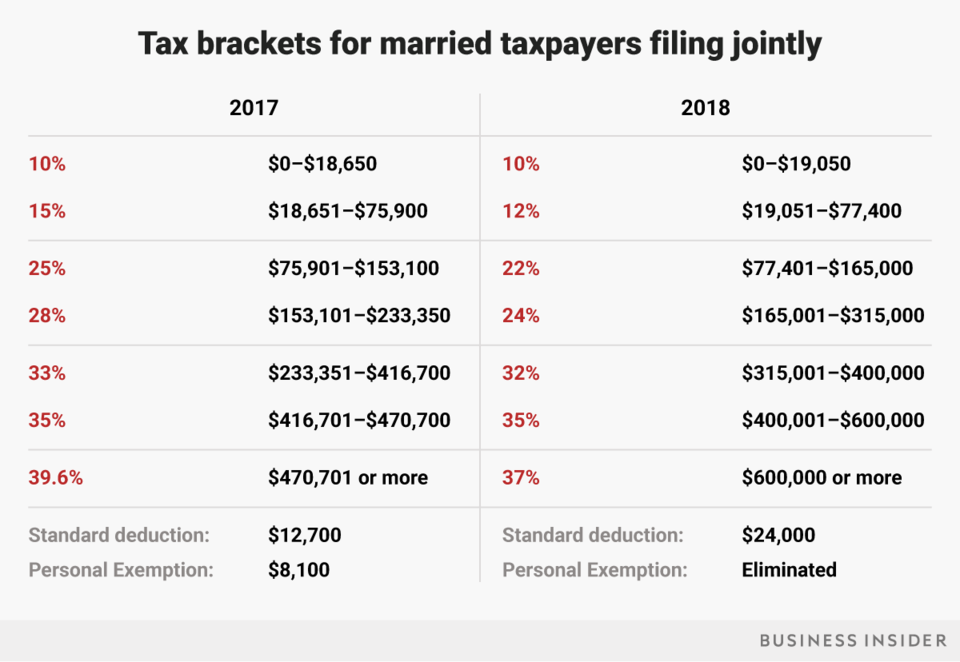
The stock market ran up largely on huge savings on business taxes and massive cuts in government regulations [Sept. 2018 Report].
With this extra cash savings, companies hired more workers, invested in new or expanded plants, rebounding U.S. manufacturing like we have not seen since before the last recession.
The result: The U.S. economy was on a tear showing strong job growth, and the unemployment rate at the lowest in nearly 50 years. Wages are also starting to rise, now at a nine year high.
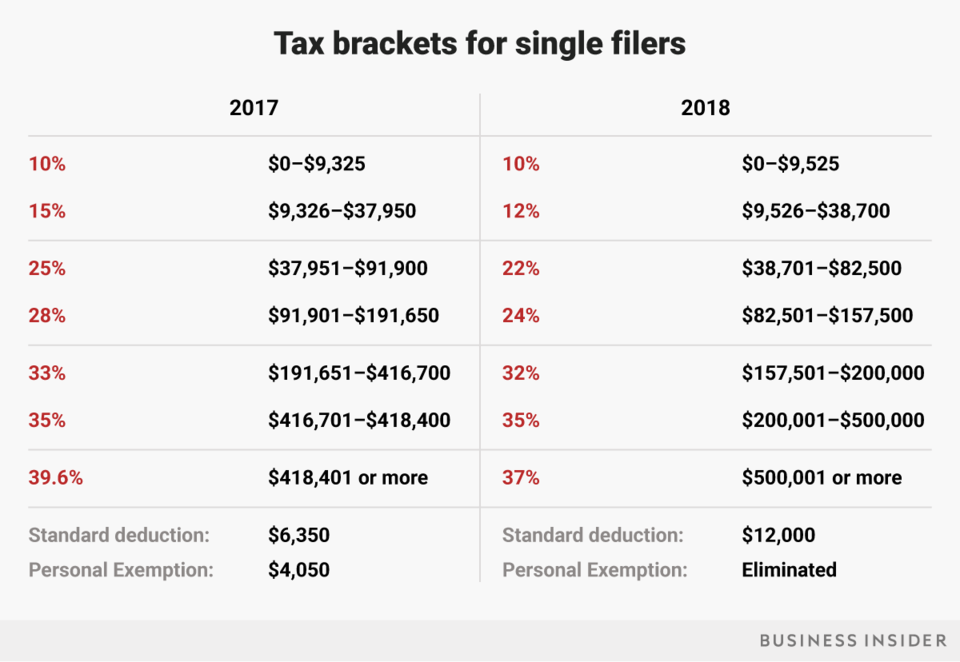
The growth in the U.S. economy under Trump has helped those who have retirement savings in the stock market.
As for inflation, the Bureau of Labor Statistics reported, imports increased a half (.05) percent in September, after falling 0.4 percent in August and 0.1 (1/10) percent in July.
Consumer inflation is also very low historically, currently at 2.3 percent over the last twelve months ending this past September. Most of the inflation increase is due to a rise in oil prices.
So inflation is not an issue, but the FED has made it an issue.
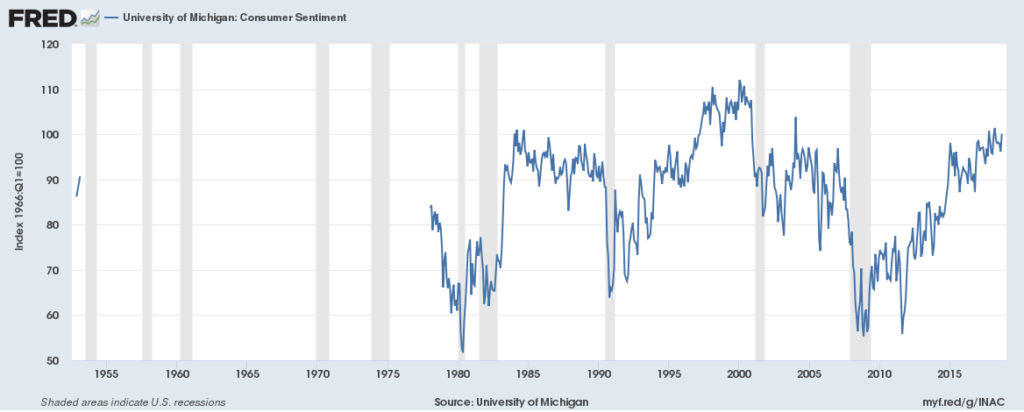
Consumer Sentiment measures the confidence of U.S. consumers about the U.S. economy. Consumer Sentiment is the highest it’s been in 14 years, since 2004.
Goldilocks – A Near Perfect Economy?
The U.S. economy has been in a near perfect scenario: Growing well; not too hot, or not too cold. Inflation is under control. There are some risks with regard to the FED raising rates, but what could hurt the economy in the near term is a major change or disruption in national public policy trends.
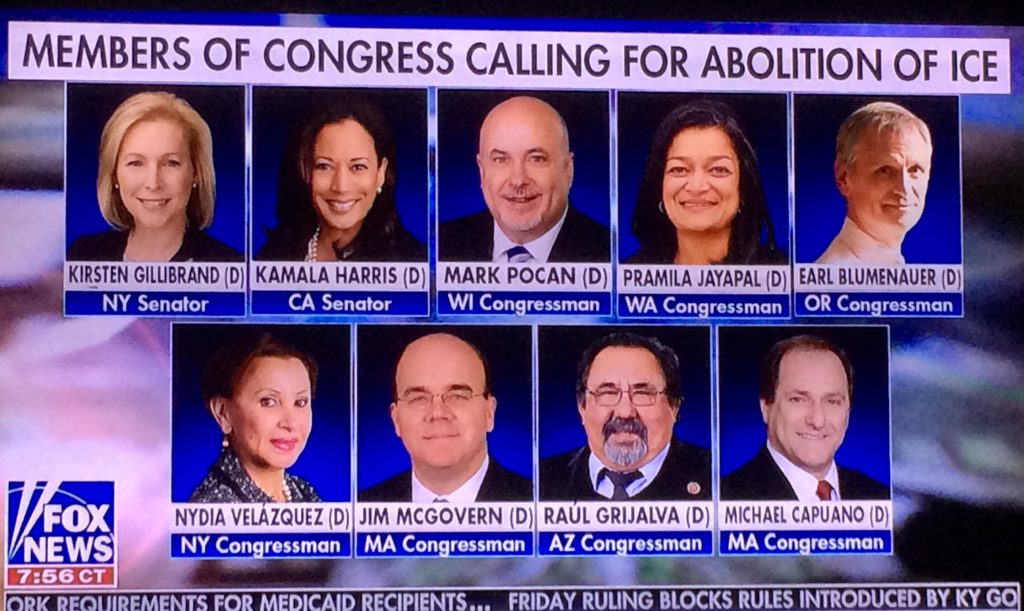
(D) Open Borders, Abolish ICE Police
Democrats have moved further Left toward National Socialism, like Venezuela.
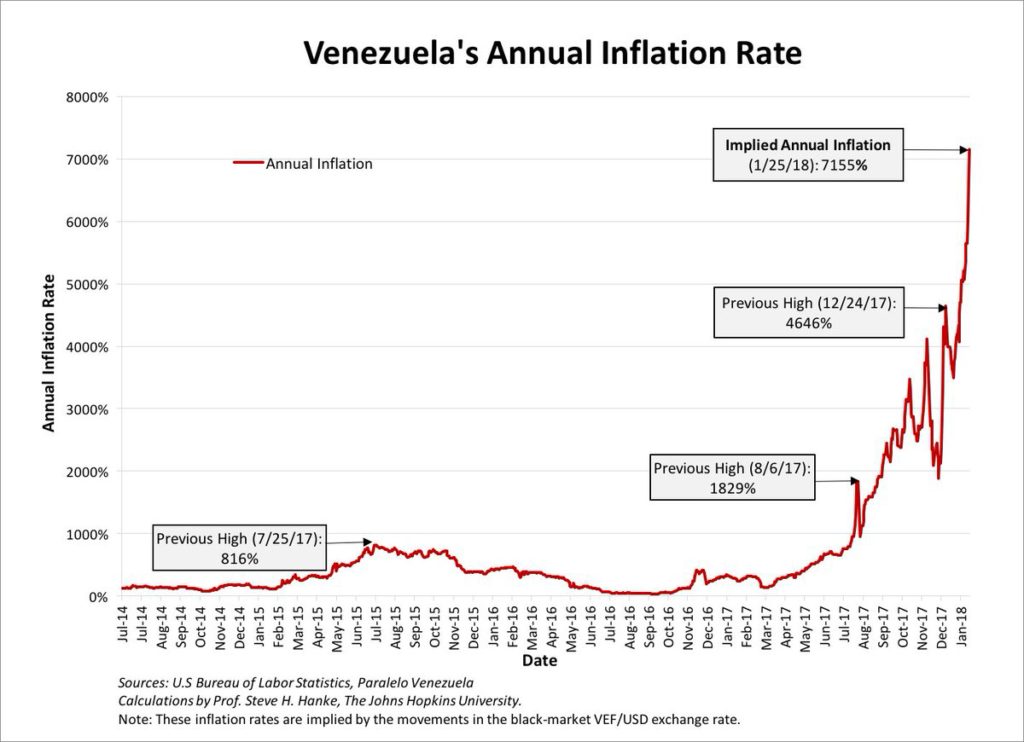
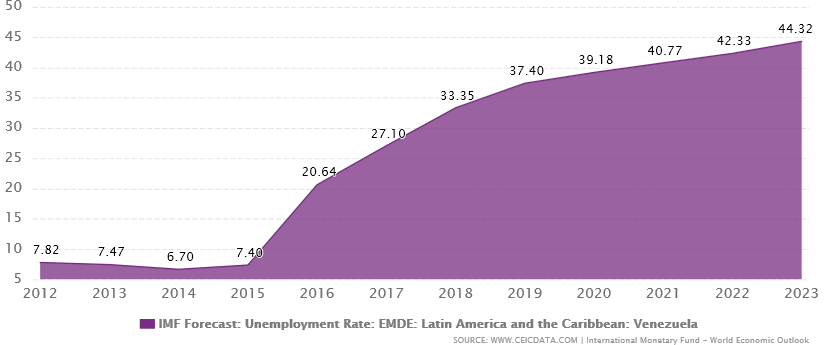
National Socialism in the USA would wreak major havoc on the U.S. economy and the stock market. Dems have discussed repealing tax cuts, Abolish ICE police, and eliminate U.S. borders, where anyone could just walk in the U.S. and get automatic privileges.
Ultimately Dems, seek to gain a permanent voter base of mostly poor and less educated people they can control and influence by giving them government freebees at the expense of working Americans, and existing permanent U.S. aliens. Many (D)-ran cites such as Chicago and San Francisco have enacted policies to allow non-U.S. citizens to vote in U.S. elections.
California DMV reported that 1,500 non-U.S. citizens were “accidentally” registered to vote, which would be illegal.
ObamaCare 2.0
Dems want to take healthcare over again. The result of the last (D) healthcare takeover, aka “ObamaCare” occurred when Dems took over the House and Senate in 2010. One Democrat Senator called ObamaCare, a “Train Wreck” coming and he was correct.
Democrat-ran healthcare created government spending to over $10 Trillion in President Obama’s first four years. By 2013, President Obama finally admitted that government-ran system was not as efficient as the private sector.
By 2016, more people were uninsured than before Obamacare was passed [Report].
But don’t let past failures get in the way of massive future failures.
“Some 70 Democrats in the House of Representatives — more than one-third of the party’s representatives — endorsed a plan on Thursday to outlaw private health insurance and force all Americans into a government-run system.”
Dems want to spend at least $32 Trillion on “Medicare For All” covering just the first 10 years. That works out to be roughly $100,000 cost, per person in the USA – including infant babies.
The move here however, would balloon the National Debt another $32 Trillion to over $52 Trillion in the first ten years, which ultimately, we argue would crash the U.S. economy.
Taxes would have to soar to cover some of the debt service. Dems want to eliminate the ‘Trump Tax Cuts’ which covers maybe 1/32 of the cost. Consumer spending would plummet with new taxes to cover this new debt.
Consumers would then have less money to spend or invest in their own futures. Businesses would cut investment spending, and with declining consumer purchases, businesses would then lay people off. What follows is higher unemployment, which drives down wages, a slowing economy, and soon it’s recession all over again.
(D): Follow Our Views — or Else?
And those who don’t follow the views of the ‘new State’ (a charge in congressional control); people will be punished?
‘There will be ‘collateral damage’ for those who don’t share our views’
Nancy Pelosi (D-CA), 10-18-2018 (PDF)
Dems have an arsenal of other things they want to do, or try and do if they regain power.
(D): 52 New Congressional Investigations?
With control of the House, Dems plan a reported 52 investigations. All of this is designed to try and preoccupy the Trump Administration so nothing can get accomplished.
Dems also will stop every current investigation that has to do with Democrats and the Obama Admin’s involvement in trying to fix the 2016 election, by clearing Hillary Clinton from various known potential criminal charges, to Clinton’s et al, creating false Russian documents used to spy on the Trump campaign; Obama Admin’s State Dept., DOJ, FBI, and others colluding to create false allegations with the goal to impeach Trump in the event he wins in 2016 [OIG Report] [JW Court Docs] [FISA Memo] [HR Intel Report] [“Collusion against Trump” timeline].
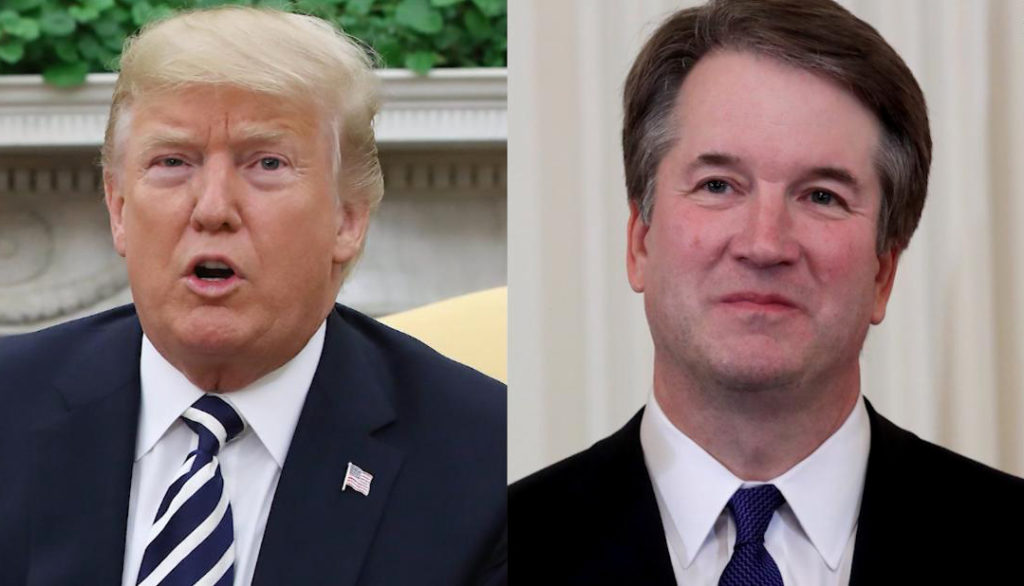
(D) Impeach Trump and SCOTUS?
Dems said after the 2016 election that they could work with Trump and provide examples where they could work with the new President. Well, that didn’t last very long.
“New DNC Chair Perez to Trump – I’ll be your worst nightmare”
— Source: The Hill, 02-25-2017
It looked like the only person who suffered a ‘nightmare’ was the DNC chair’s ex-girlfriend.
Dems have repeatedly called to impeach Trump, and hope they can find some crime in their planned 52 new investigations so they can use some loose cause to try and impeachment the President.
Dems also want to impeach (any?) Supreme Court Justice that does not go along with their Totalitarianism?
“Impeaching Kavanaugh rouses progressive Democrats after confirmation”
The odds of any impeachment are extremely low, however the threat, motivation and intent by Dems should be an alarming eye opener at the ballot box.
If a party is willing to go to this extreme to remove people from lawful authority because they disagree with their views, or disagree with the established law, what makes an average citizen think they will be protected from such tyranny? Unless that party starts taking away their ability for citizens to defend themselves? [Reports].
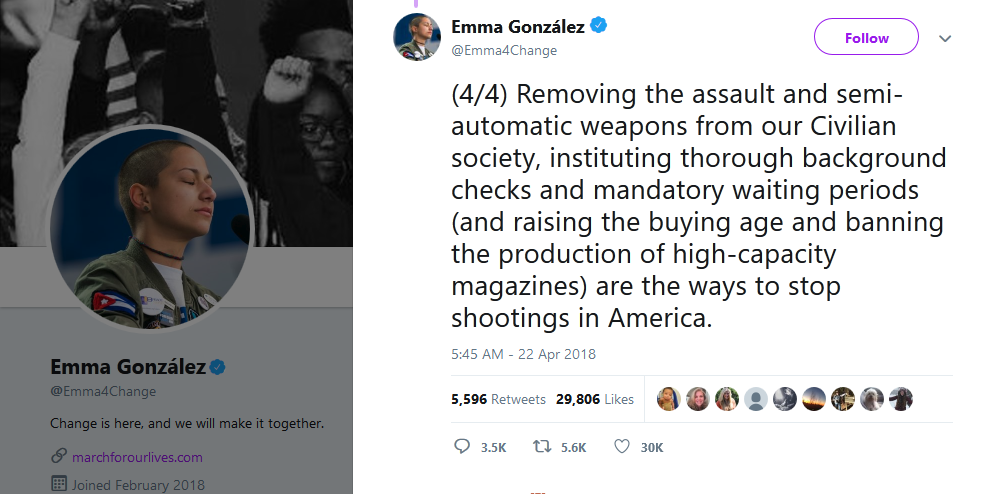
(D) Gun Ban
Nancy Pelosi (D-CA) also said, ‘the issue of gun control would top the Democratic Party’s agenda in the House of Representatives if they take control.’
This includes to ban so called “assault rifles” which are not actually assault rifles, but rather called “long guns” that fire one shot, per pull of the trigger. Assault rifles sound scary to the uninformed, and then the uninformed support getting rid of them.
- Report: U.S. History: How The USA Became A Gun Culture
Wall Street isn’t overly concerned about gun control, but they are concerned about changes to policies that could hurt business. Massive debt spending, repealing tax cuts, raising taxes, and increasing regulations would have a huge negative impact on the U.S. economy.
What if Dems take the House, and the GOP keeps the Senate?
OK, so absolutely nothing gets done. Dems will do what they have always done, and force their party members to follow one way of thinking (Groupthink), and block everything the Trump Administration is trying to do.
These aren’t Dems like in decades past where they come together and negotiate. It is their way, or the highway. The Trump Administration reluctantly agreed with Dems to deficit spending and avoiding a recent government shutdown because it was the only way to get Trump’s military spending passed.
If Dems take the House and GOP has some control of the Senate; basically we go back to the old ways of big government tax and spending. Trump doesn’t control the House or Senate where spending bills are originated, mostly in the House.
Trump would eventually either have to sign (D) massive spending bills, or shutdown non-essential government. The Dems will use the media to blame Trump for the Dems massive debt spending in 2019-2020. Watch.
New Trump Trade Deals Still Require Congressional Approval
The recent U.S.-Mexico-Canada trade deal that revises and replaces NAFTA still requires approval from both the House and Senate.
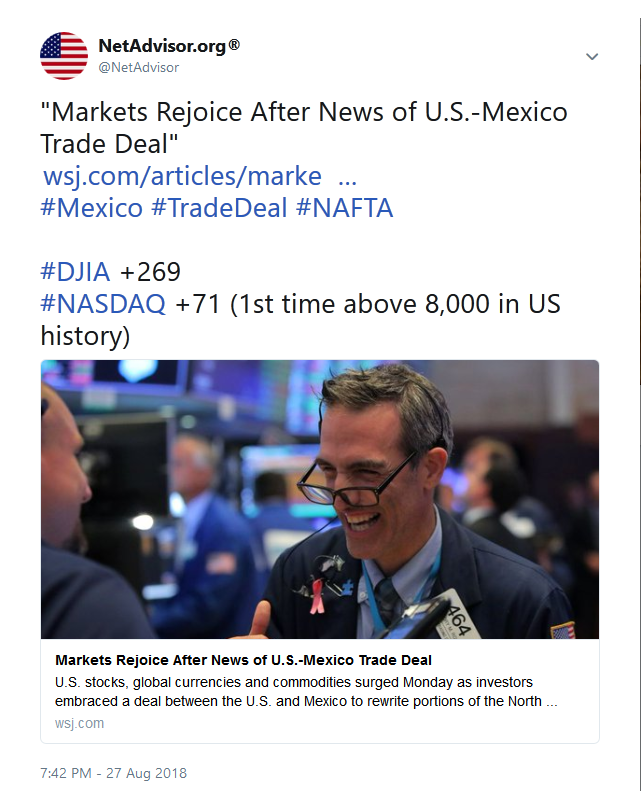
2020: Dems Hope for Failure
Dems hope to stop the Trump Administration’s economic progress.
As long as the economy continues to grow, it hurts the Democrats’ 2020 presidential run against Trump. If Dems can get the economy to tank, by blocking legislation in the House or Senate, create conflict and chaos for the next two years, Dems, and much of the media will point out that it was ‘Trump’s fault.’ Dems tried this same ploy with President Bush [Report].
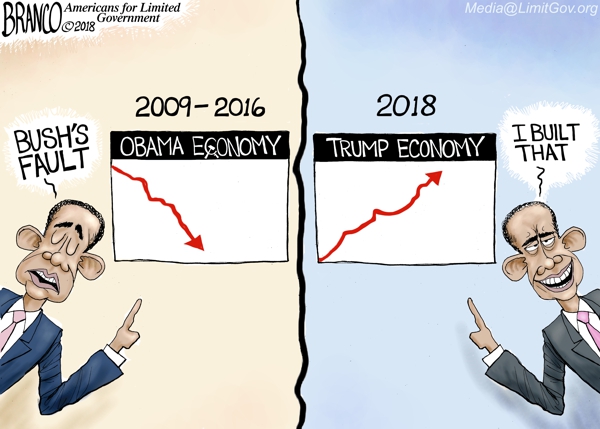
Dems hope that a false perception will be enough to remove a ‘political outsider’ (Trump) from the Big Government Establishment and go back to the old ways of governing – tax and spend.
Stocks Recalculating Political Risk
We argue the stock market’s pull back this month is the market recalculating mostly political and some interest rate risk. The stock market does not like uncertainty about the future, and right now that is exactly what we have.
Companies are investing less recently and this is because of the unknown outcome in the midterm elections.
If businesses invest less, they will not need to hire more workers. If the economy slows, consumers will spend less, and this runs the risk of recession. This risk has wiped nearly 10 percent off the market in less than a month.
Everything that the Trump Admin has sought to do for jobs and the economy, renegotiating international trade deals, getting out of military actions in foreign countries, leading on fighting terrorism, all could be blocked if Dems take the House and or the Senate.
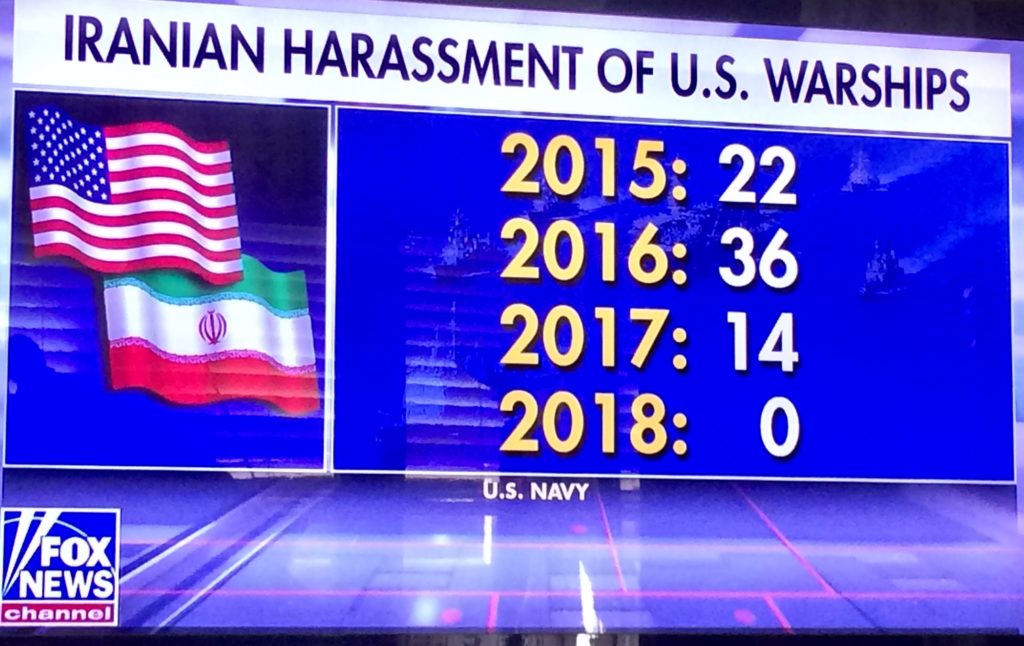
Predictions
– (a) If (D) take the House or Senate. Stocks continue to fall in correction. Stocks are likely fall right after Nov. election depending on the level of which part is in control. Government goes into effective gridlock. Little gets done, unless it includes massive (D) spending and polices. There will be no border funding, no wall. U.S. business slows or reduces investing/ spending; U.S. economy slows its pace of growth.
– (b) Continued Interest Rate Hike Risks = Economic Slowdown.
– (c) If (D) takes the Senate, Trump will no longer be able to appoint any judge to a judiciary as a (D) Controlled Senate will block any nomination.
– (d) If (R) keep the House and Senate, stocks rebound from correction. Large relief rally is highly likely.
– (e) If (R) keep the House and gain 60+ votes in the Senate, stocks soar the day after the midterm elections. Economy will go back on track. Still the other remaining risk is the impact of rate hikes by the FED.
Hit subscribe (it’s free, we don’t exchange/ give/ rent/ sell etc., your info).
Follow NetAdvisor on twitter for latest interim posts, fact checking, and clarity of news events.
Images may be copyright by their respective owner. Image credits: Associated Press, Branco, Business Insider, Fox News, Getty Images, Twitter and The Wall Street Journal. FED Chart credit: FRED, Federal Reserve Bank of St. Louis. Venezuela charts as credited.
Original article content, Copyright © 2018 NetAdvisor.org® All Rights Reserved.
NetAdvisor.org® is a non-profit organization providing public education and analysis primarily on the U.S. financial markets, personal finance and analysis with a transparent look into U.S. public policy. We also perform and report on financial investigations to help protect the public interest. Read More.

